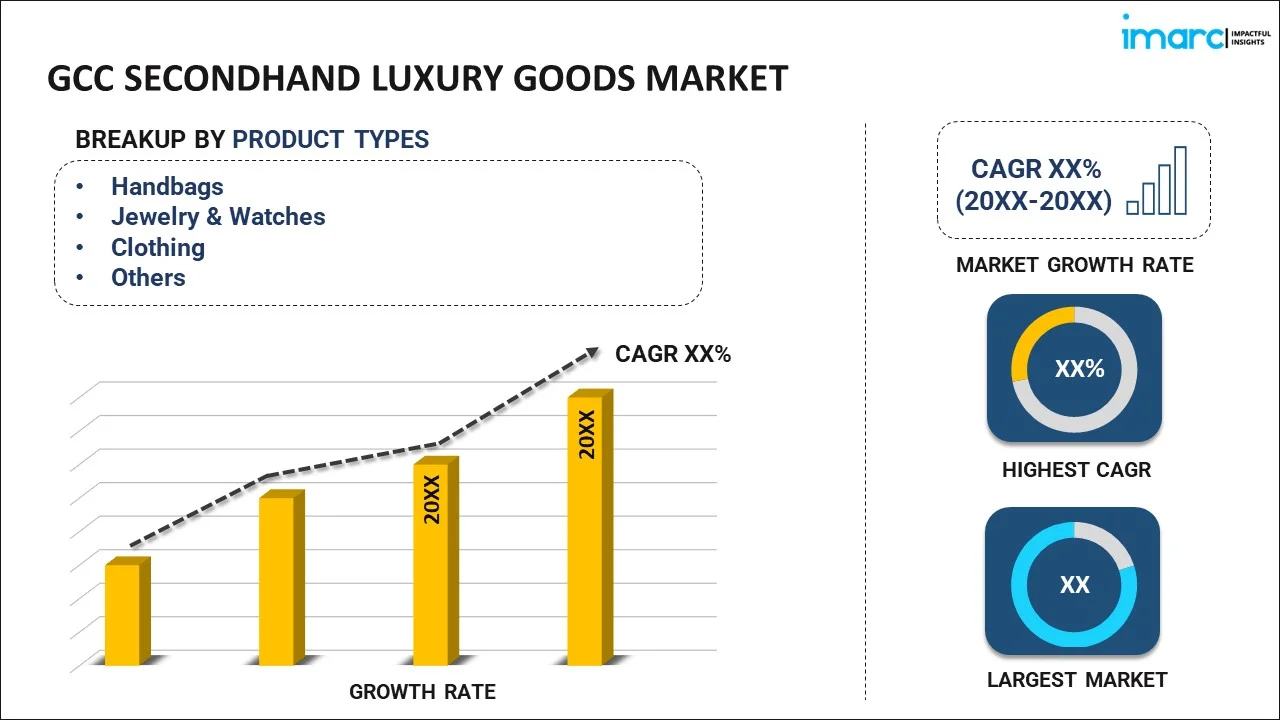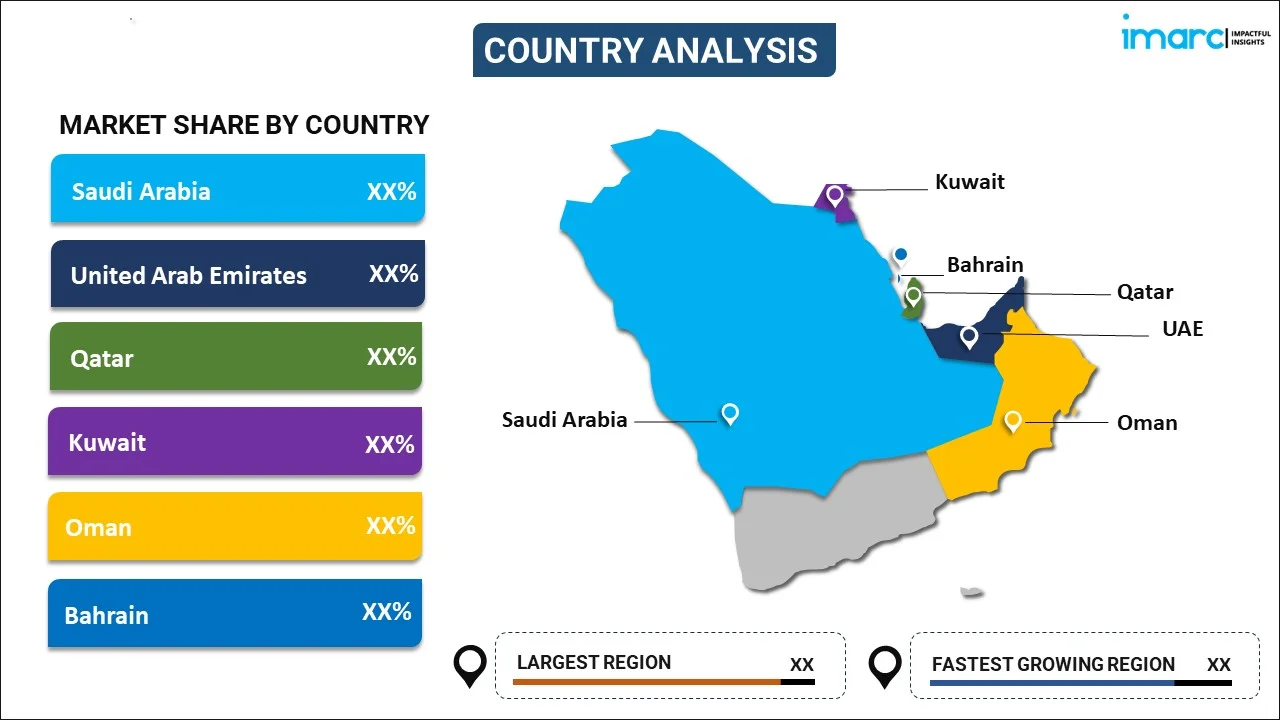
GCC Secondhand Luxury Goods Market Report by Product Type (Handbags, Jewelry & Watches, Clothing, Small Leather Goods, Footwear, Accessories, and Others), Demography (Women, Men, Unisex), Distribution Channel (Offline, Online), and Country 2025-2033
Market Overview:
The GCC secondhand luxury goods market size reached USD 617.3 Million in 2024. Looking forward, IMARC Group expects the market to reach USD 1,512.0 Million by 2033, exhibiting a growth rate (CAGR) of 9.94% during 2025-2033.
|
Report Attribute
|
Key Statistics
|
|---|---|
|
Base Year
|
2024
|
|
Forecast Years
|
2025-2033
|
|
Historical Years
|
2019-2024
|
|
Market Size in 2024
|
USD 617.3 Million |
|
Market Forecast in 2033
|
USD 1,512.0 Million |
| Market Growth Rate 2025-2033 | 9.94% |
Secondhand luxury goods, also known as pre-owned luxury goods, refer to premium products purchased by the second or later end user. The prices of these goods are significantly lower than the original product, due to which they attract a larger section of society. Individuals generally sell and buy used high-end products through auctions, bazaar-style fundraisers, charity events or privately-owned consignment shops.
The GCC secondhand luxury goods market is primarily driven by the rising penetration of western trends, particularly in the urbanized parts of the region. The diminishing stigma regarding the use of preowned goods, coupled with the improving trade conditions with the European countries, is also propelling the market growth. Besides this, several companies engaged in the manufacturing of luxury products have started dealing in secondhand luxury goods to maintain the unique identity of their brand and cater to the needs of the consumers. Moreover, the expanding retail sector, rising living standards and growing disposable incomes of the consumers are some of the other factors that have significantly increased the product demand.
Key Market Segmentation:
IMARC Group provides an analysis of the key trends in each sub-segment of the GCC secondhand luxury goods market report, along with forecasts at the regional and country level from 2025-2033. Our report has categorized the market based on product type, demography and distribution channel.
Breakup by Product Type:

- Handbags
- Jewelry & Watches
- Clothing
- Small Leather Goods
- Footwear
- Accessories
- Others
Breakup by Demography:
- Women
- Men
- Unisex
Breakup by Distribution Channel:
- Offline
- Online
Breakup by Country:

- Saudi Arabia
- UAE
- Qatar
- Oman
- Kuwait
- Bahrain
Competitive Landscape:
The competitive landscape of the industry has also been examined along with the profiles of the key players.
Report Coverage:
| Report Features | Details |
|---|---|
| Base Year of the Analysis | 2024 |
| Historical Period | 2019-2024 |
| Forecast Period | 2025-2033 |
| Units | Million USD |
| Segment Coverage | Product Type, Demography, Distribution Channel, Country |
| Countries Covered | Saudi Arabia, UAE, Kuwait, Qatar, Bahrain, Oman |
| Customization Scope | 10% Free Customization |
| Post-Sale Analyst Support | 10-12 Weeks |
| Delivery Format | PDF and Excel through Email (We can also provide the editable version of the report in PPT/Word format on special request) |
Key Questions Answered in This Report
The GCC secondhand luxury goods market was valued at USD 617.3 Million in 2024.
We expect the GCC secondhand luxury goods market to exhibit a CAGR of 9.94% during 2025-2033.
The increasing demand for high-end fashion accessories at lower prices, along with the emerging trend of re-selling unwanted luxury goods, is primarily driving the GCC secondhand luxury goods market.
The sudden outbreak of the COVID-19 pandemic has led to the changing consumer inclination from conventional brick-and-mortar distribution channels towards online retail platforms for the purchase of secondhand luxury goods across several GCC nations.
Based on the product type, the GCC secondhand luxury goods market can be categorized into handbags, jewelry & watches, clothing, small leather goods, footwear, accessories, and others. Currently, jewelry & watches account for the majority of the total market share.
Based on the demography, the GCC secondhand luxury goods market has been segregated into women, men, and unisex. Among these, women currently exhibit a clear dominance in the market.
Based on the distribution channel, the GCC secondhand luxury goods market can be bifurcated into offline and online. Currently, offline holds the largest market share.
On a regional level, the market has been classified into Saudi Arabia, UAE, Qatar, Oman, Kuwait, and Bahrain, where Saudi Arabia currently dominates the GCC secondhand luxury goods market.
Need more help?
- Speak to our experienced analysts for insights on the current market scenarios.
- Include additional segments and countries to customize the report as per your requirement.
- Gain an unparalleled competitive advantage in your domain by understanding how to utilize the report and positively impacting your operations and revenue.
- For further assistance, please connect with our analysts.
 Request Customization
Request Customization
 Speak to an Analyst
Speak to an Analyst
 Request Brochure
Request Brochure
 Inquire Before Buying
Inquire Before Buying




.webp)




.webp)












